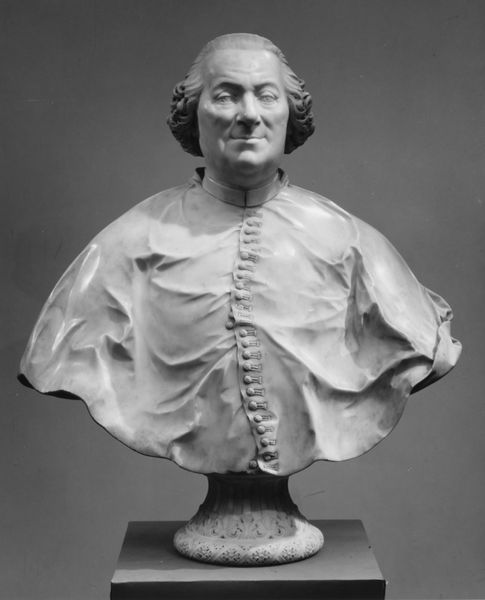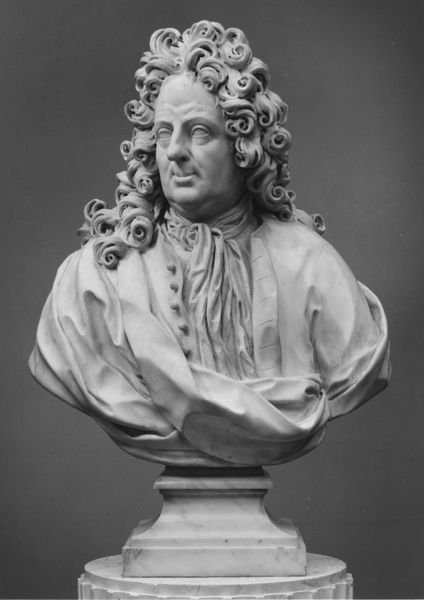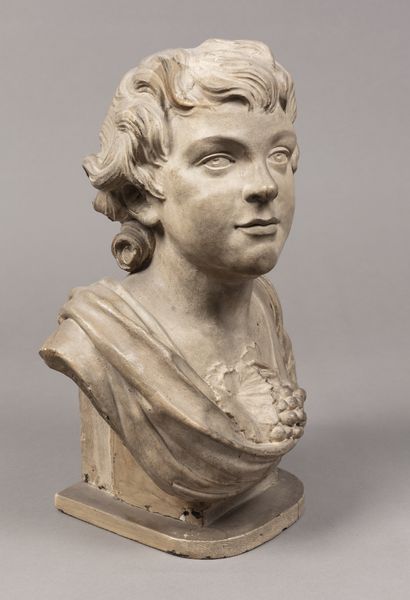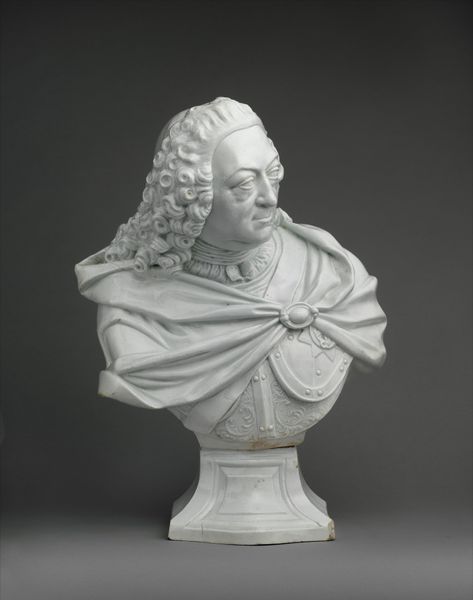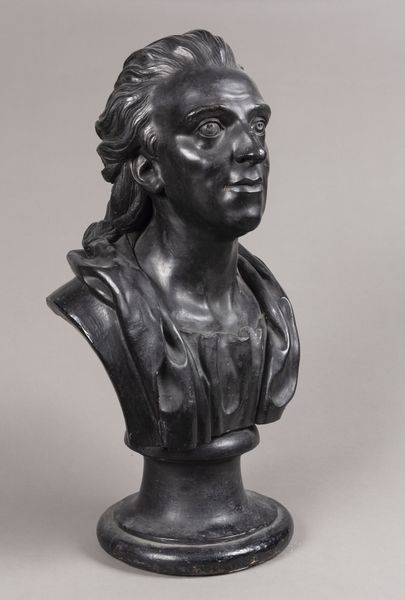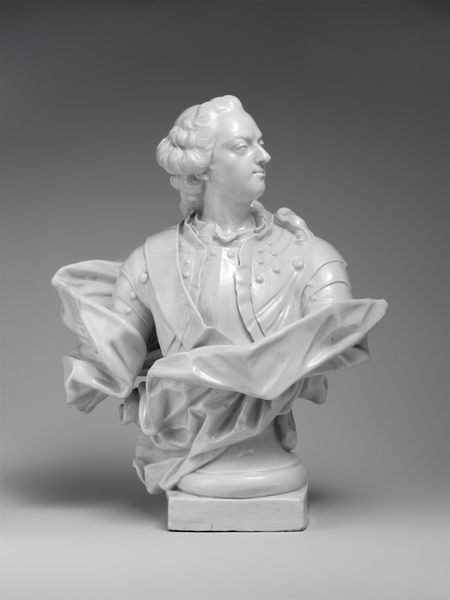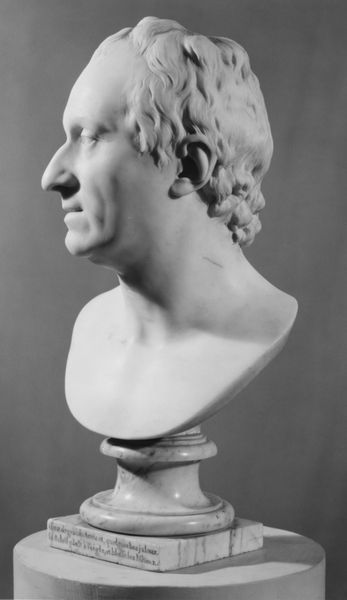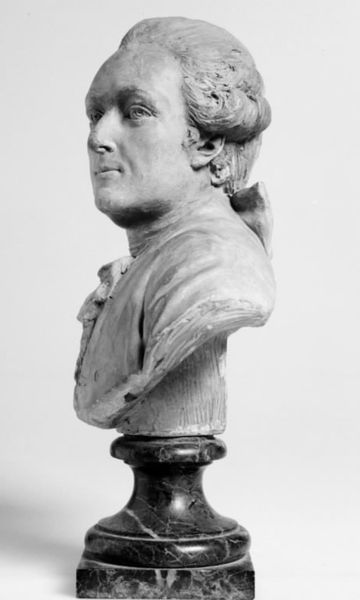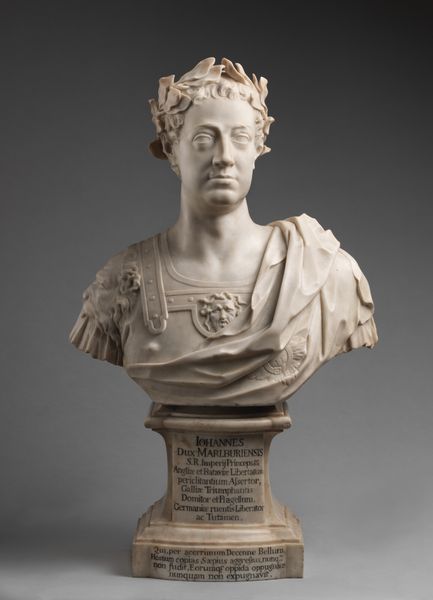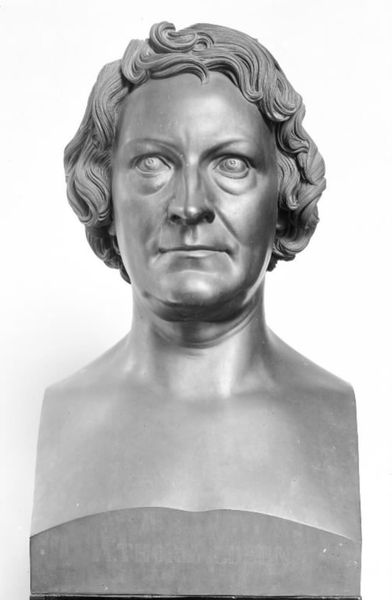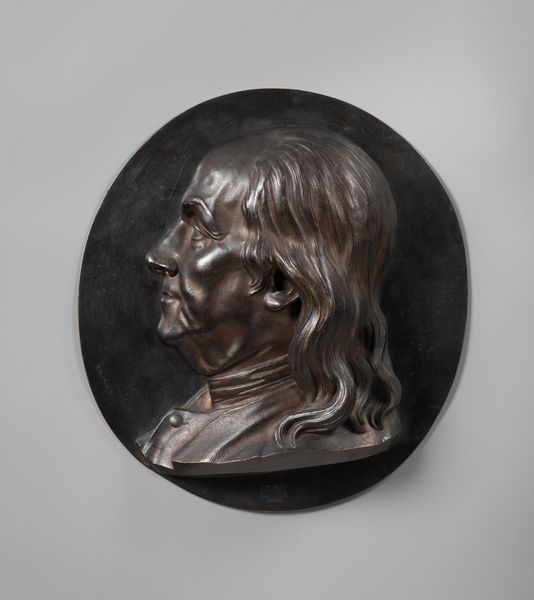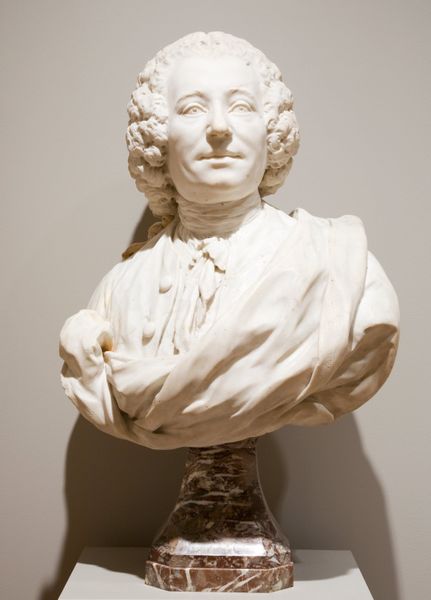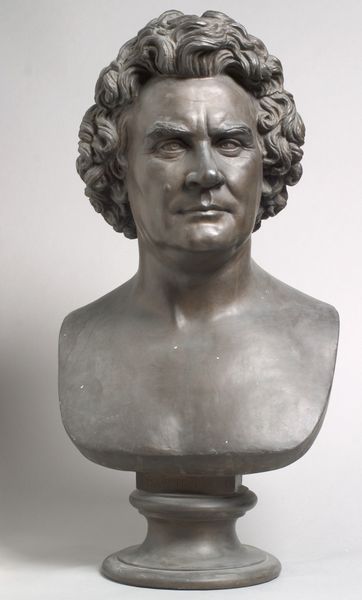
ceramic, porcelain, sculpture
#
portrait
#
sculpture
#
ceramic
#
porcelain
#
sculpture
#
men
#
decorative-art
#
rococo
Dimensions: Height (without frame): 18 1/4 in. (46.4 cm); Framed: 21 × 16 1/2 in. (53.3 × 41.9 cm)
Copyright: Public Domain
Curator: Hewelke Manufactory's "Carlo Bertinazzi (1713–1783)", created sometime between 1756 and 1768, captures a gentleman in glazed porcelain. Its Rococo flair seems prevalent here, but tell me what are your first impressions? Editor: An initial stillness, despite all the surface movement. The figure is presented in this muted palette that strips away potential vivacity, forcing a subdued, almost melancholic read. Who was he, really? Curator: Bertinazzi was the stage name for a famed actor of the Comédie-Italienne, playing Harlequin. The ruffled jabot, the jaunty cap—these signal his profession, certainly. Porcelain as medium adds layers; this once animated figure frozen for eternity, his essence made permanent. Editor: Yet there's also something deeply unsettling about fixing this actor’s identity in porcelain—almost akin to immortalizing performance. To what extent does the sculpture preserve Carlo's identity versus performing and solidifying eighteenth-century concepts of ideal manhood? Are we engaging with a man, or with porcelain, privilege, and theatre? Curator: Consider the material properties. The translucence of porcelain lends itself to mimic human skin so effectively while allowing the sharp folds and contours of the clothes to create depth. This dance between opacity and luminescence elevates it beyond mere representation. Editor: Absolutely, but the costume also points us towards certain assumptions. Note the aristocratic associations conveyed by the expensive clothing, contrasted with the cap suggesting an unconventional and comedic actor's role, a tension that adds further nuance. What socioeconomic position did these performances offer, and at whose expense? How did that era influence depictions of status in ceramic works such as these? Curator: The asymmetry, too, feels crucial—a deliberate avoidance of perfect symmetry that brings out the human. In this case, the head is cocked subtly to the left, all leading our eye on a spiraling course that feels dynamically alive. Editor: A fascinating dance of contrasts— between stage identity and real persona, the rigid form and fluid design, offering complex and engaging commentary. Curator: Indeed, a perfect blend of craft and captivating representation frozen for generations, yet alive today. Editor: This tension invites us to contemplate representation, labor, and performance—both onstage and off—challenging the assumed stability in these historical objects.
Comments
No comments
Be the first to comment and join the conversation on the ultimate creative platform.
